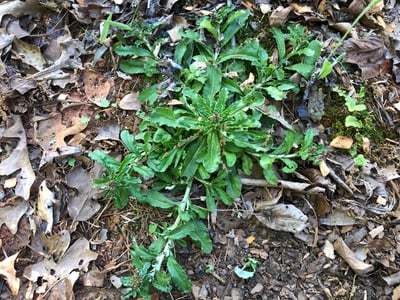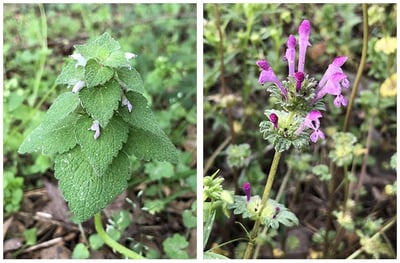
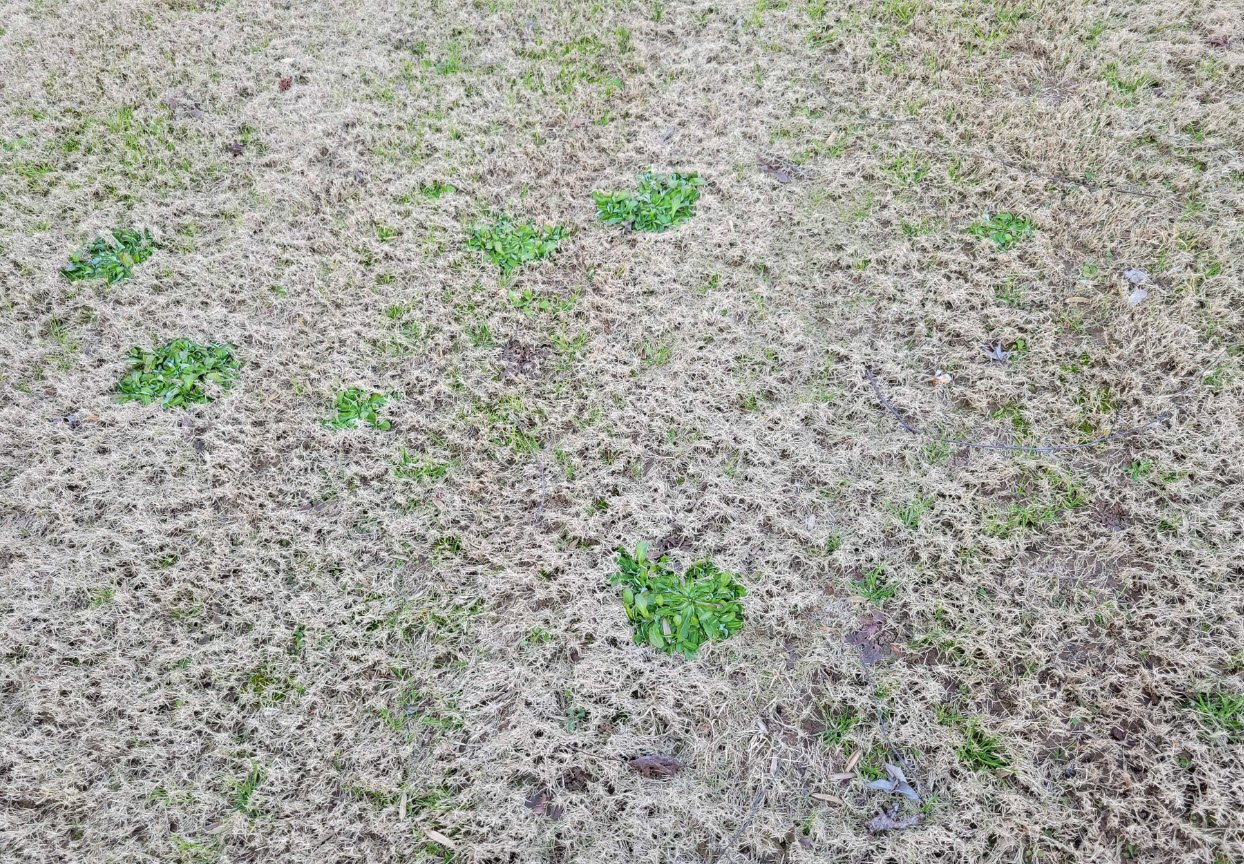
It is January and many areas of the southeast are enjoying a rare snow day or two. But beneath the snow and frost some of us are noticing weeds in our yards. Loathsome, obnoxious weeds! Did you see weeds in early January this year and wonder what is up?
Mother Nature is what’s up! Specifically, the record-setting high temperatures many areas experienced during the recent holidays. The result is winter weeds popping up in your landscape unusually early.
So how do you tackle this problem? We've got some advice for you.
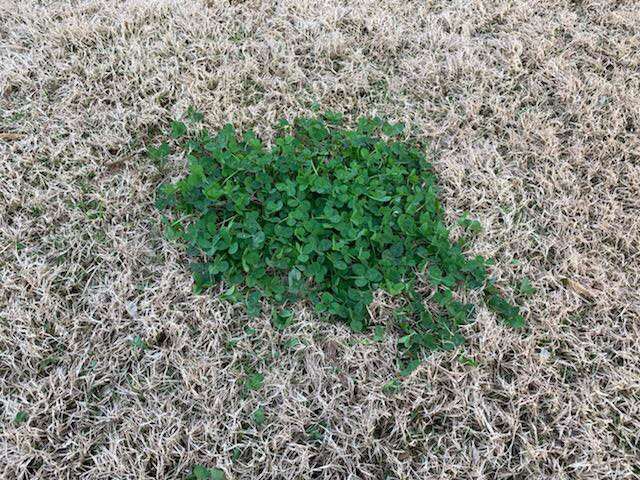
White clover certainly stands out in a dormant Bermuda lawn. This plant needs both pre- and post-emergent herbicide treatments for control. Photo by Kevin Kilgore, Super-Sod Store Manager in Alpharetta, Georgia.
Too Late for Prevention
We’ll start with what NOT to do. Don't apply pre-emergent herbicide in January – it will be a waste of your money and time. Pre-emergent treatments need to be applied before weed seeds start to germinate. If you are seeing green weeds in your brown, dormant lawn, that means they have already germinated. By January, soil temperatures are too cold for germination so your product will just sit and leach out of the soil before it can provide any benefit.
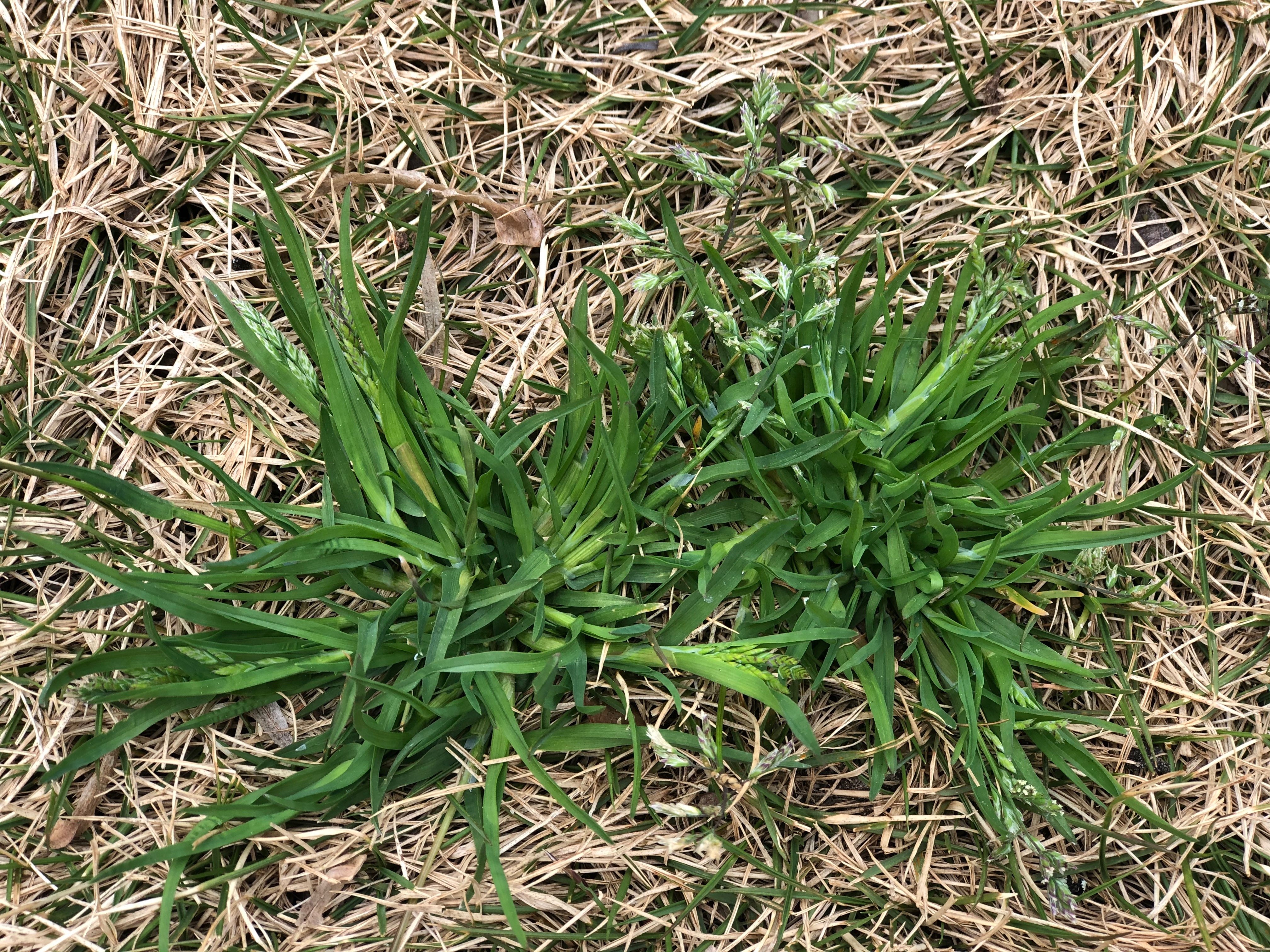
Poa annua grows fast! Make sure to remove it or mow it before all those seeds spread. Photo by Hillary Thompson, Super-Sod Director of Marketing.
So What Can You Do Now?
Your best course of action is to work out your frustration by pulling those pesky, pernicious, propagating weeds!
- Removing: Save your money and burn some holiday calories by hand-pulling and digging! Removing weeds with the roots is really the most effective option. (Poa annua usually comes up quite easily.) Want to save your back? Hillary Thompson likes, "a CobraHead long handle weeder that saves me from stooping. This is my favorite tool but there are other options to keep you standing while pulling out those annoying weeds."
- Mowing: For those of us with dormant lawns, mowing in January might seem silly. But whether you are mowing your lush Fescue or your brown Bermuda, mowing will help stop those winter weeds from making and spreading seeds. It is not as effective as pulling weeds but depending on how prolific the problem is, it might be faster!
- No Spraying (Yet): Most post-emergent herbicides are not effective when daytime temperatures fall below 65 degrees. And since we are currently enjoying a return to more winter-like temperatures, spraying those chemical treatments will be fairly ineffectual. When we have a few warmer days in the forecast, you can break out your pump-up sprayer. Keep in mind that it often takes more than one application.
👍 Rule of Thumb: Always make sure to carefully read the label on your products and follow application instructions. Ensure you use an herbicide that’s approved for your grass type. Important note: Although your dormant lawn is brown, it will be adversely affected by spraying a broad-spectrum, non-selective herbicide like glyphosate.
Identifying Your Weeds
Being able to identify weeds is helpful for determining how to control them. These are common winter weeds in the Southeast, click to see photos and learn more about each one:
- White clover
- Poa annua or annual bluegrass
- Common chickweed
- Hairy bittercress
- Shiny cudweed
- Dead nettle and henbit
Common winter weeds (clockwise from top left): shiny cudweed, common chickweed, poa annua, hairy bittercress, henbit, and dead nettle.
Fall Pre-Emergent Not Working?
If you are wondering why you have weeds now even though you did apply pre-emergent last fall, it may be one of two things:
- Water: In order to work, pre-emergent chemicals must make contact with the seeds. For granular pre-emergent this happens by "watering-in" after application because irrigation/rainfall is required to activate the herbicide. On the other hand, too much water can make the treatment less effective. Last fall several tropical storms passed through the Southeast bringing very heavy rain to some areas. Pre-emergent treatments may have been moved downhill or washed deeper into the soil, compromising the effectiveness in part or all of your lawn.
- Timing: When you apply pre-emergent is also a key factor in how well it works. If you were late applying the pre-emergent, you might have had weed seeds already germinating. A mild and wet fall can cause winter weed seeds to germinate earlier than usual..
Stay on Schedule
Remember pre-emergent will not work on those weeds that have already sprouted. But you should prepare to apply pre-emergent in February when the Forsythia bushes flower (signaling the ground is warm enough for the pre-emergent to work). That application will reduce late spring/early summer weeds.
Want us to remind you when it is time for weed control, fertilizer, or other lawn maintenance? Join our Monthly Lawn Tips email list.
Better yet, sign up for our Lawn Coach Subscription service and we will ship you the lawn treatment products you need when it is the right time to apply them.







